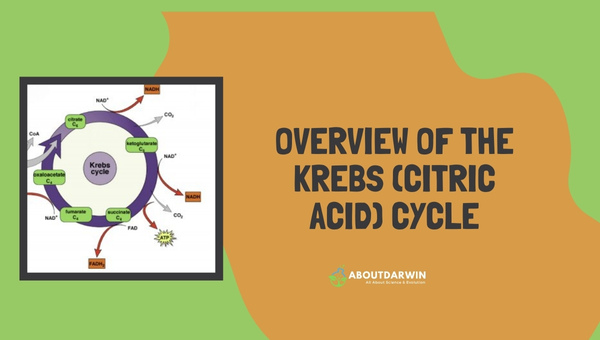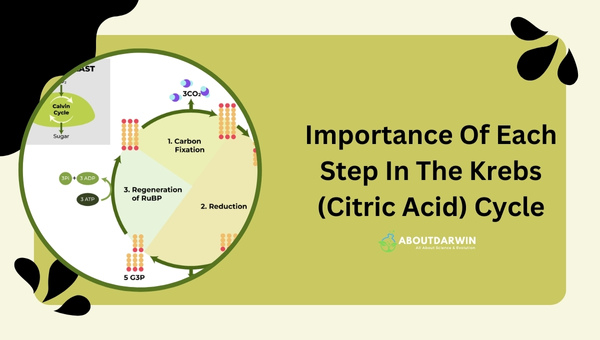Physical Address
304 North Cardinal St.
Dorchester Center, MA 02124
Welcome! I’m thrilled you’ve stopped by to join me today as we embark on an extraordinary cellular journey. You might be wondering, why the excitement? Well, we’re about to dive into the Krebs Cycle (Citric Acid). Yes, that magical process that happens in every cell of our bodies and every living organism around us.
But wait, don’t hit the back button just yet! You don’t need a science degree to understand this—it’s simpler than it sounds, I promise.
Whether you are brushing up for a test or just curious about what goes on inside your cells, stick around for this step-by-step explanation of the Krebs Cycle (Citric Acid Cycle). Brace yourself for an enlightening adventure. Trust me; you won’t look at your body’s metabolic processes the same way again!
Contents
Do you remember the time when your teacher mentioned something about the way your cells make energy in science class? That’s what the Krebs Cycle is all about. It’s a series of chemical reactions our bodies use to generate energy from carbohydrates, proteins, and fats we consume.

But there’s more to this than meets the eye. The Krebs (Citric Acid) Cycle is not just an arbitrary sequence of reactions that happen inside our cells.
It plays a vital role in keeping us alive by providing much-needed energy for various bodily functions. So buckle up as we delve deeper into understanding it!
When you think about your daily activities, like walking your dog or even pressing the keys as you type on your computer, all these actions demand energy. But have you ever stopped to think about where this energy comes from? Here’s where the Krebs Cycle enters the picture.
The Krebs Cycle is a crucial part of cellular respiration – our body’s way of turning the food we eat into usable energy. During this cycle, cells break down molecules derived from carbs, fats, and proteins to generate ATP, our body’s primary energy currency. This vital process ensures that each cell in our body has enough power to carry out its unique functions!
Every bite of food you’ve eaten and every breath you’ve taken all come down to a series of events in your cells known as the Krebs cycle. Without diving too deep into scientific jargon, let’s understand what happens during this fascinating cycle.
The Krebs Cycle is all about conversion. It starts when our body breaks down food into a molecule called Acetyl CoA. This molecule enters the cycle and goes through a sequence of chemical changes.
Along the way, it loses carbon dioxide and transfers high-energy electrons to special carrier molecules. At the end of this process, we’re left with ATP -the energy-rich molecule that powers countless strategies in your cells. This conversion process is so fundamental that it’s often referred to as the ‘central hub’ of cellular metabolism!
Also Read: Unveiling MacConkey Agar: Composition, Principles, and Uses
Dive into the world of cellular energy production with me as we explore the steps of the Krebs (Citric Acid) Cycle. Here, you’ll learn how glucose conversion sets the stage for this intricate cycle.
We’ll break down how citrate forms, changes to isocitrate, and then undergoes a sequence of chemical reactions resulting in ATP – our body’s primary energy source. Let’s unravel this complex process together!
Let’s start with the beginning. Before the Krebs cycle can kick off, your body must transform glucose into Acetyl CoA. Oh, and it’s not just glucose that can be transformed—fats and proteins follow suit, too.
This initial step is called glycolysis, which breaks down glucose into a molecule called Pyruvate. Pyruvate is then converted into Acetyl CoA via a process named decarboxylation (because it loses carbon dioxide). Think of this preparatory phase as setting the stage for the grand performance that is about to unfold.
Now begins our journey through the Krebs Cycle with a step-by-step explanation! The Acetyl CoA we just created combines with a compound known as oxaloacetate to form citrate (hence the name “Citric Acid Cycle”). This ingenious setup effectively turns two relatively low-energy molecules into one jam-packed powerhouse!
The newly-formed citrate undergoes slight rearrangement in its structure via a series of chemical reactions resulting in isocitrate. This might seem like an insignificant change on paper, but it sets up everything else that follows in this energy-producing cycle.
We’re now midway through our detailed step-by-step explanation of the Krebs cycle! What happens next? We have oxidation—the removal of electrons from molecules—and another round of decarboxylation or CO2 loss.
Across these three stages—Isocitrate to Alpha-Ketoglutarate, then succinyl-CoA—we’re charging up energy carrier molecules like NAD+ and FAD.
Congratulations! We’ve reached the climax of our citric acid journey—the formation of ATP takes center stage! The succinyl-CoA generated in the previous step is transformed into succinate, producing ATP (or GTP in some cells) along the way.
Succinate then continues its transformation, ultimately regenerating oxaloacetate and thus completing our journey around the cycle.
Also Read: Cetrimide Agar: Uncover Its Composition, Principle, and More
Just like a beautifully conducted orchestra, it’s not just the Krebs Cycle’s overall process that’s important.

Every step in the cycle serves a specific purpose, and every compound plays its role perfectly to keep our cells functioning with maximum efficiency.
The actors in our cellular concert aren’t just filling up the stage; they’re each playing indispensable roles. Let’s take a quick look at how each of them contributes to keeping our cells humming along.
Starting with citrate—we’d have no concert without it! This molecule sets the wheels in motion by being first off on the parade around the cycle path. It was formed when Acetyl CoA combined with oxaloacetate, setting us up for energy generation.
Next is isocitrate—the shape-shifting virtuoso! It starts as citrate but gets rearranged to shape the road ahead for energy production.
Then we have alpha-ketoglutarate and Succinyl-CoA—not just secondary characters! They’re central to two critical steps: electron transport and ATP formation. Alpha-ketoglutarate hands over electrons to NAD+, charging this energy carrier that powers other cellular processes while succinyl-CoA triggers GTP production (which can be converted into ATP).
And finally, succinate—star of regeneration! Succinate is transformed back into oxaloacetate through several steps and readying itself for another round of ATP production.
Also Read: Isostatic Rebound: Uncovering Post-glacial Rebound Process
Yes! Besides glucose, fats, and proteins can also be converted into Acetyl CoA—the initial substrate for the Citric Acid Cycle.
The entire sequence of reactions that constitute the Krebs (Citric Acid) Cycle occurs in mitochondria—the ‘powerhouse’ of eukaryotic cells.
ATP represents the end product and primary goal of the Krebs Cycle; it serves as our body’s main energy currency, powering numerous biological activities.
Acetyl CoA kickstarts the Krebs cycle by combining with oxaloacetate to form citrate, propelling a sequence of energy-releasing reactions.
The Krebs Cycle is crucial as it generates ATP, the body’s primary energy source, vital for a myriad of cellular processes.
Also Read: Understanding Normal Laboratory Values: A Guide to Lab Test
Phew! We’ve finally made it to the end of our exciting journey through the Krebs (Citric Acid) Cycle. We’ve seen how this intricate process expertly converts glucose into ATP, energizing our cells and essentially keeping us running. There’s a certain elegance in this chemical dance that happens millions of times a minute inside each of our cells.
Remember, every morsel you eat and breath you take plays a part in fueling this essential cycle. So next time you’re munching on an apple or taking a jog around the park, give a thought to the fantastic cellular mechanics making it all possible!